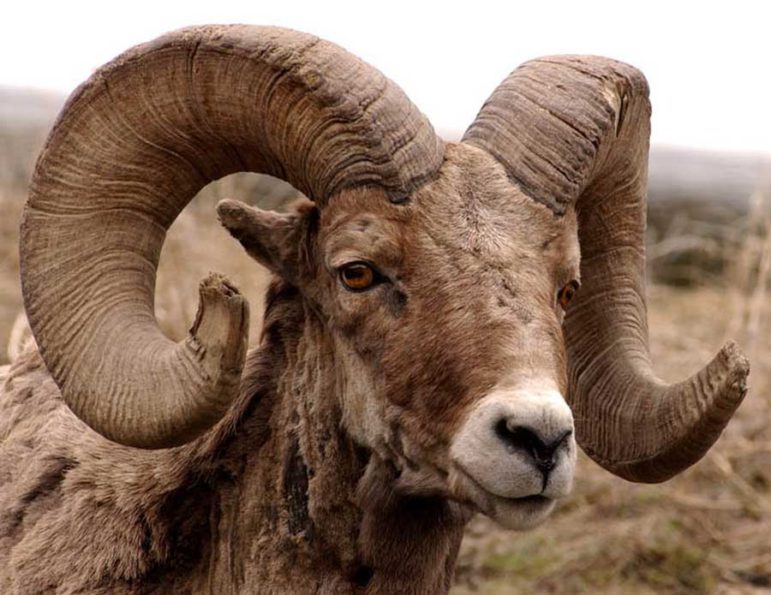
CODY, WYO. — Wildlife officials in Montana are closely watching a herd of bighorn sheep near the northern boundary of Yellowstone National Park after several of the animals have been killed by an outbreak of pneumonia.
Montana Fish, Wildlife and Parks workers have collected 10 dead bighorn sheep over the last two weeks—a mix of rams, lambs and one adult ewe. Analysis at the state wildlife lab in Bozeman determined all the sheep died from pneumonia.
The sheep were part of a herd in the Gardiner area, just north of Yellowstone. But it’s impossible to detect the exact source of the outbreak, according to a statement released by FWP.
Wild bighorn sheep can be highly susceptible to respiratory illnesses transmitted by healthy domestic sheep who are resistant to the diseases, and there are currently domestic sheep flocks in the area, according to state wildlife officials.
Bighorn sheep herds are each affected differently by pneumonia, said FWP wildlife veterinarian Jennifer Ramsey.
“Sometimes we’ll see a large-scale, all-age die-off in which most of the population dies, and that population never really rebounds,” Ramsey said. “Yet in other herds we seem to see a low-level mortality year after year.”
In the Gardiner area, bighorn sheep have experienced a small number of pneumonia cases in each of the last few years, but not to the current extent.
Kevin Hurley, conservation director for the Wild Sheep Foundation in Cody, Wyo., said that contact between wild and domestic sheep has been scientifically proven by many studies to pose a high risk factor for disease transmission.
“This is the biggest challenge we have in bighorn restoration in the West. It’s a big deal,” said Hurley, who worked previously for the Wyoming Game and Fish Department as a biologist specializing in wild sheep management.
Pneumonia can easily spread through a wild herd, Hurley said. Game agencies often will capture or kill bighorn sheep known to have been in contact with domestic sheep or goats in an effort to prevent the likely spread of disease.
Montana has seen close to 20 percent of its bighorn herds statewide die over the last several years, mainly from pandemic respiratory disease. Large-scale die-offs are also underway in Nebraska and North Dakota, Hurley said.
A similar outbreak could potentially happen anywhere there is contact between wild and domestic sheep, including around Cody, home to one of the largest bighorn herds in the country, Hurley said.
Game agencies can’t force private landowners to relocate domestic sheep, and there’s no foolproof method for guaranteeing separation on public grazing lands, especially when young rams wander off during the seasonal rut.
“But we do always try to maintain separation in time and space between wild and domestic sheep,” Hurley said.
Yellowstone Park is home to about a dozen interbreeding bands of bighorn sheep who roam the steep terrain of the upper Yellowstone River drainage, according to the park’s “Resources and Issues Handbook.”
Centered around Mount Everts, the bighorn sheep population in Yellowstone fluctuates from 100-400 animals, with the most recent count in 2012 showing 378 sheep.
Contact Ruffin Prevost at 307-213-9818 or [email protected].
